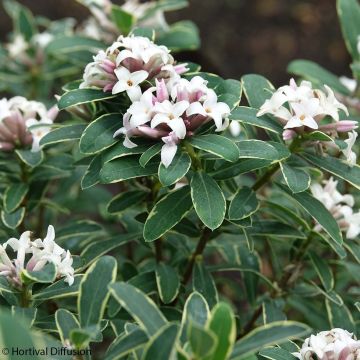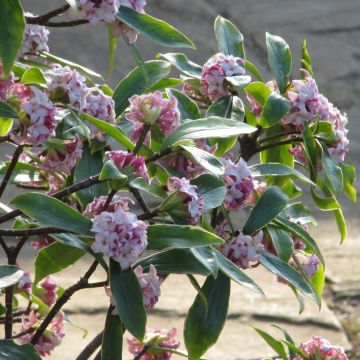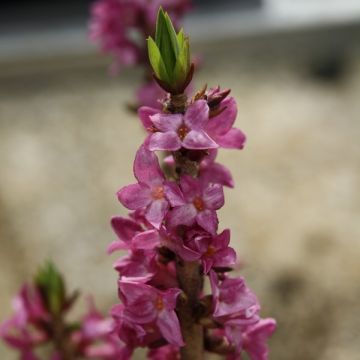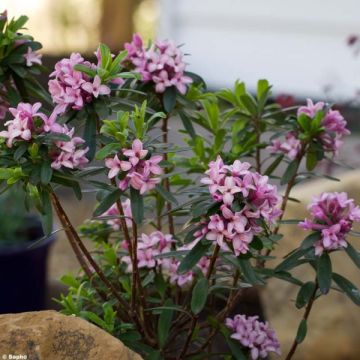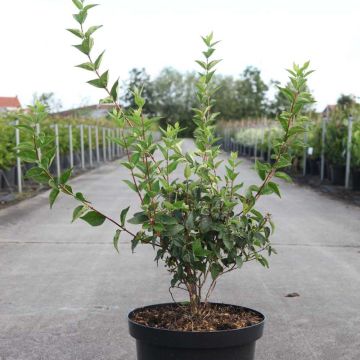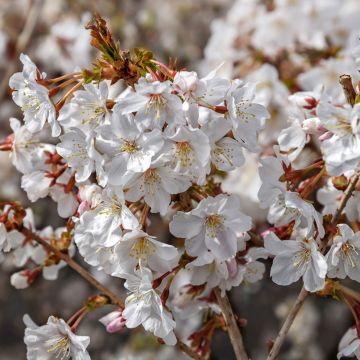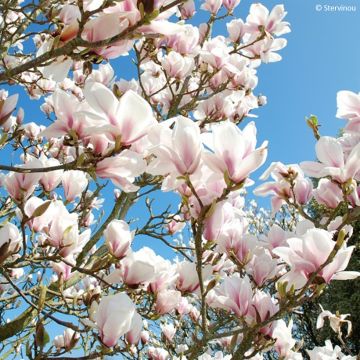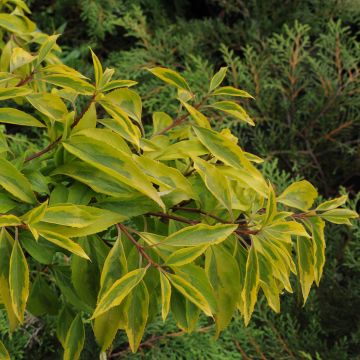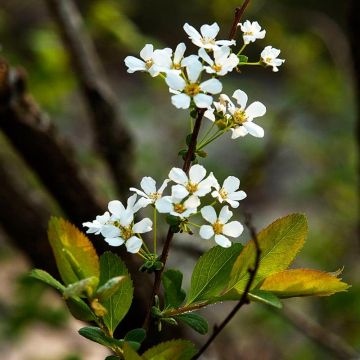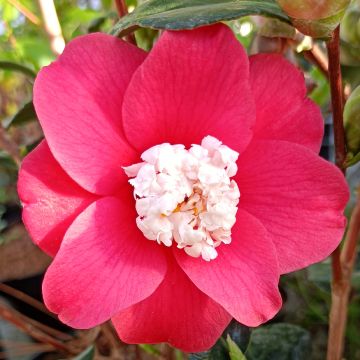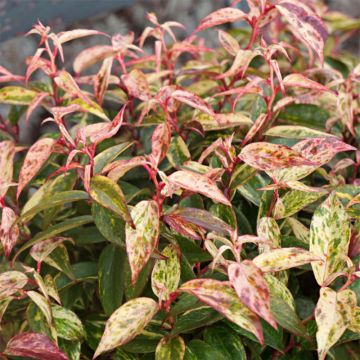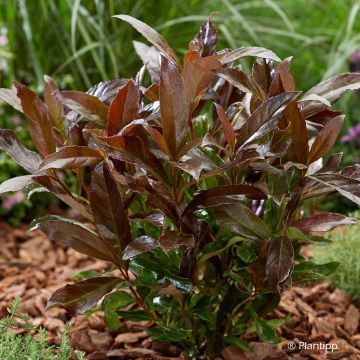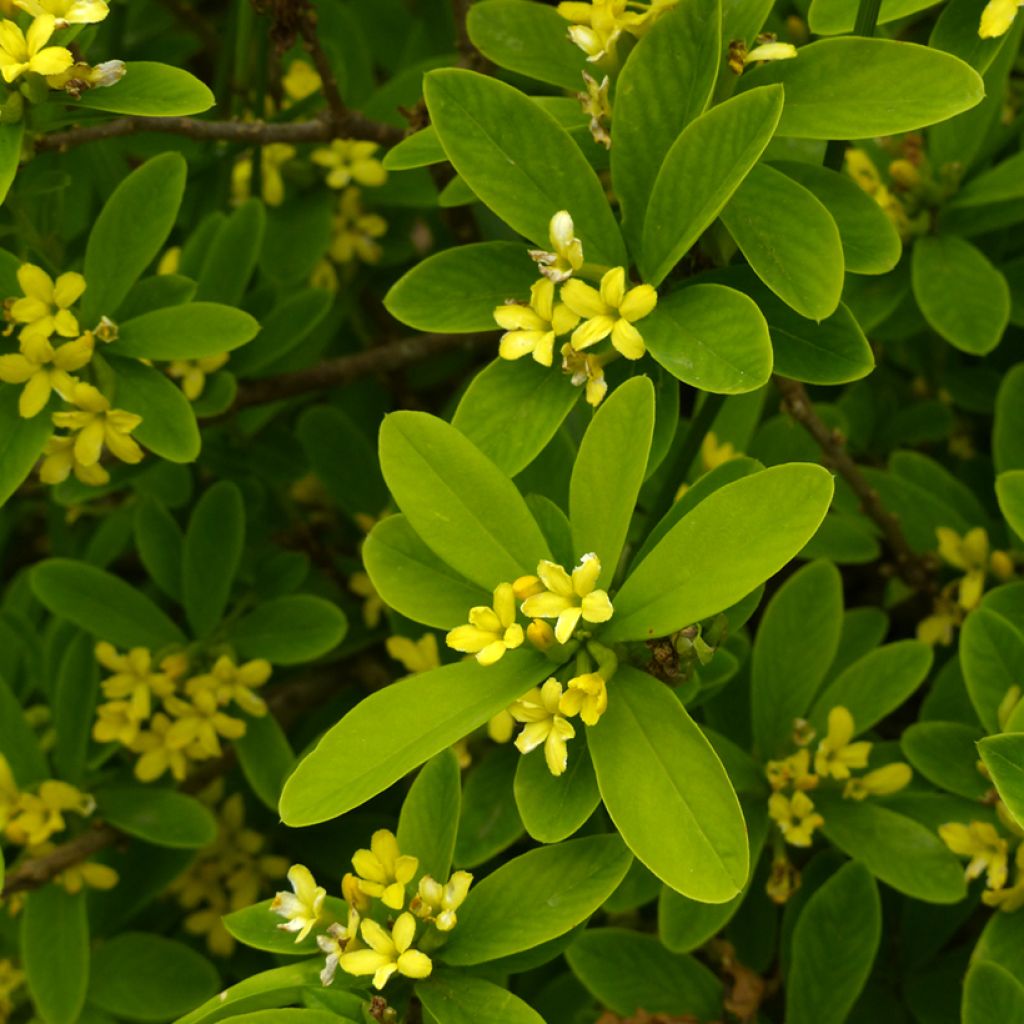

Daphne gemmata Royal Crown
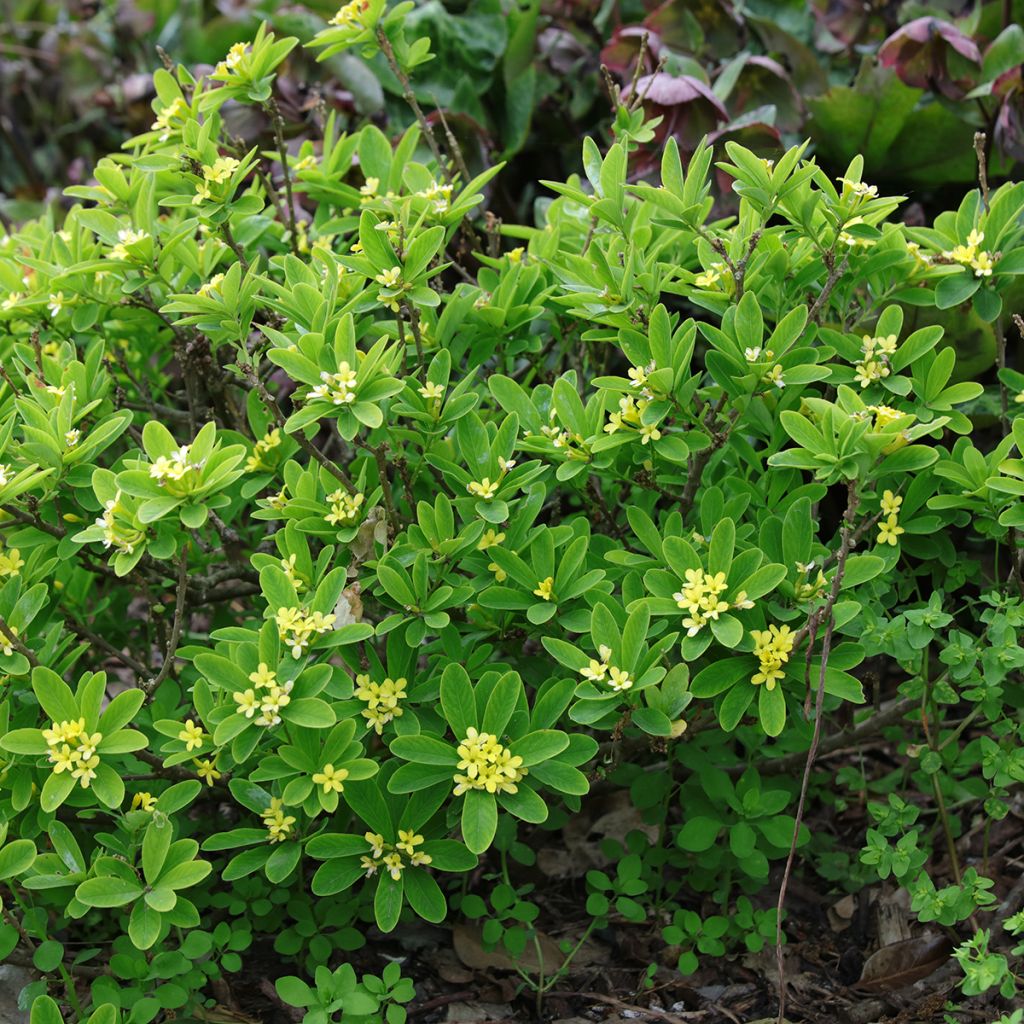

Daphne gemmata Royal Crown
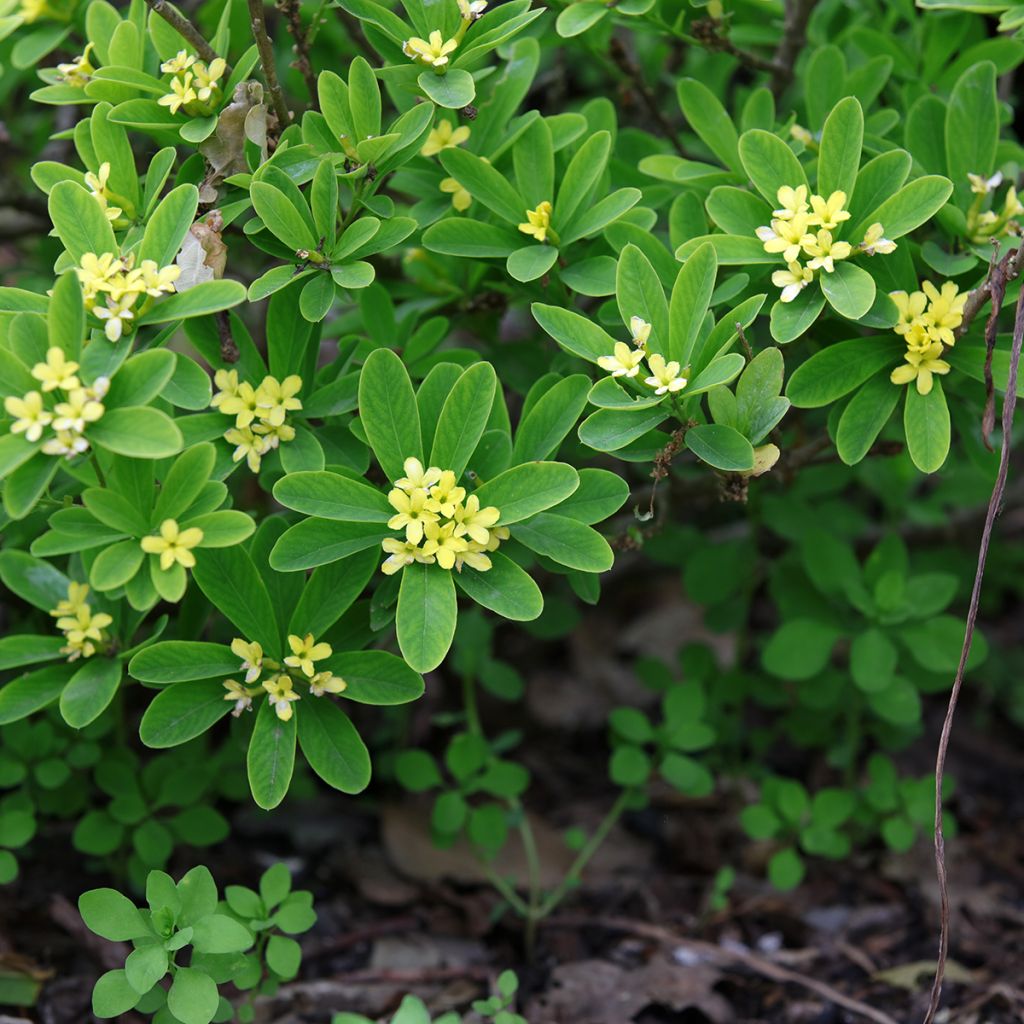

Daphne gemmata Royal Crown
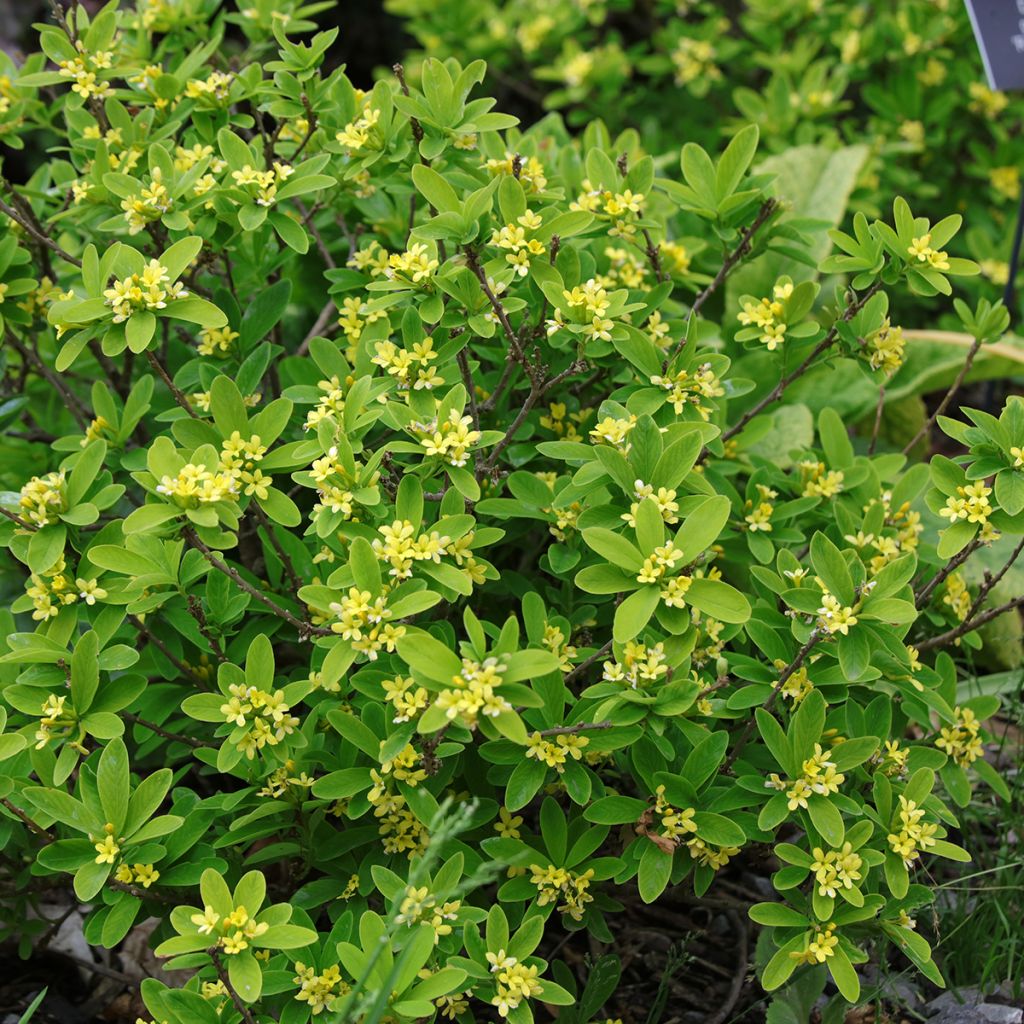

Daphne gemmata Royal Crown
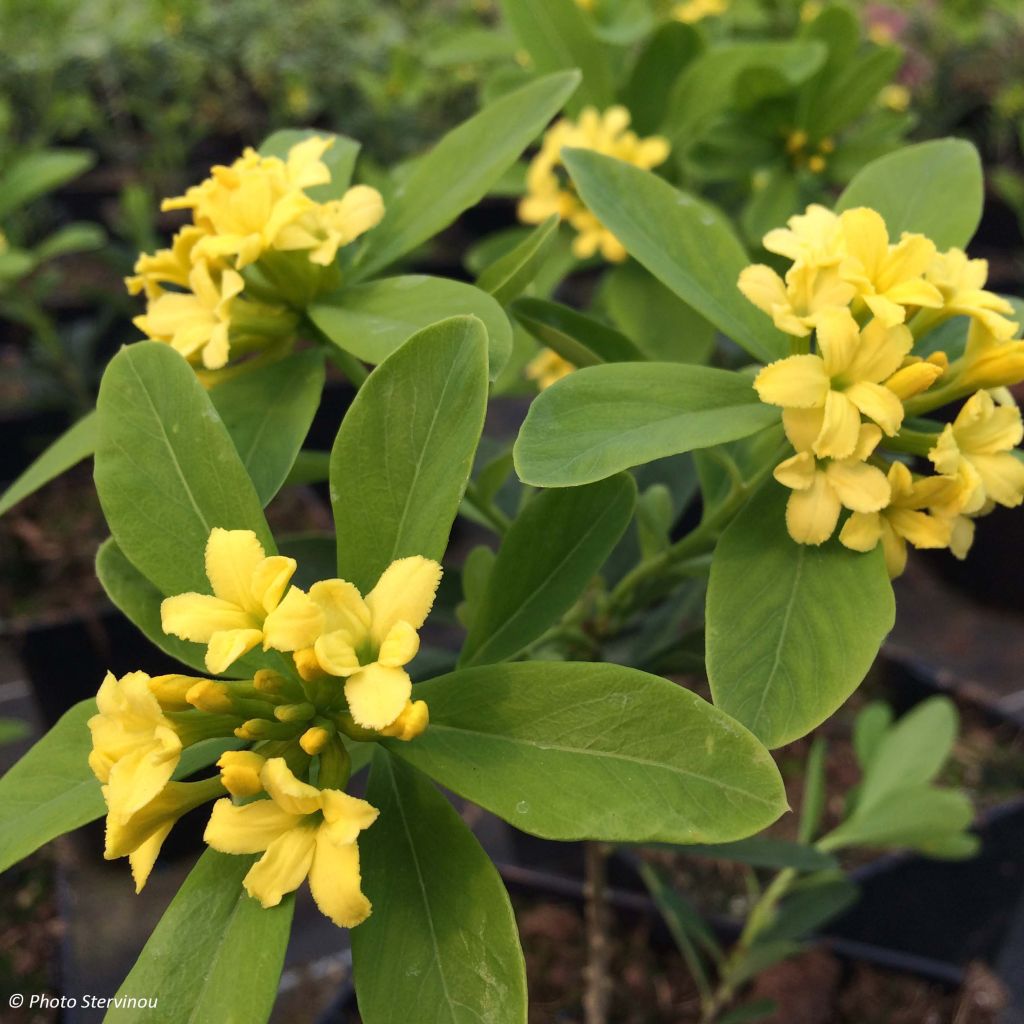

Daphne gemmata Royal Crown
Daphne gemmata Royal Crown
Daphne gemmata Royal Crown
Jewelled Daphne
Healthy and vigorous young plants. Meets my expectations well.
Luc, 13/11/2024
This item cannot be shipped to the selected country
Delivery charge from €5.90
More information
Schedule delivery date,
and select date in basket
This plant carries a 24 months recovery warranty
More information
We guarantee the quality of our plants for a full growing cycle, and will replace at our expense any plant that fails to recover under normal climatic and planting conditions.
From €5.90 for pickup delivery and €6.90 for home delivery
Express home delivery from €8.90.
Does this plant fit my garden?
Set up your Plantfit profile →
Description
Daphne gemmata 'Royal Crown' is a variety derived from a fairly rare Chinese species, preferring limestone cliffs and sunny soils to humus-bearing and acidic soils of the undergrowth. This small bush has a delightfully fragrant spring flowering. It often blooms again in late summer. Its small, waxy-looking, pale-yellow star-shaped flowers, gathered in small clusters, adorn bright green foliage that will fall in autumn. It can be grown in a pot or in open ground, in a location sheltered from cold winds and severe frosts.
Daphne gemmata belongs to the Thymelaeaceae family. The species from which this variety comes from is native to the provinces of Yunnan and Sichuan, where it is always found on sandy or limestone soil, at the edge of forests, in dry meadows or anchored in rocks, up to an altitude of 1500m (4921ft). 'Royal Crown' has slow growth and will not exceed 50cm (20in) in all directions. This deciduous bush shows a rounded habit and branches that, by its architecture, somewhat resemble a highly branched broom. Its brownish-yellow or purplish stems bear generally deciduous, entire, ovate leaves of a beautiful bright green, finely bordered with a lighter tone, with a glossy finish. Flowering takes place in May-June, and again in September-October. The small yellow tubular flowers with 5 petals somewhat resemble those of jasmine. They are gathered in small clusters at the end of the branches and emit a sweet fragrance that attracts many pollinating insects. They are followed by the formation of small bright red berries in late summer and autumn.
Whether in open ground or in a container, place Daphne gemmata 'Royal Crown' near a walkway, or not far from the house, to enjoy its intoxicating fragrance. It requires little maintenance and only needs well-drained soil and a rather sunny exposure to flourish. You can plant it with small flowering bushes in spring, such as Abelia 'Confetti', Berberis 'Atropurpurea Nana', Ceanothus thyrsifolius 'Repens', or Cytisus purpureus.
Note: Daphnes are sometimes capricious plants, whose cultivation can be delicate if the conditions are not suitable. They are reserved for gardeners with good experience.
Report an error about the product description
Daphne gemmata Royal Crown in pictures
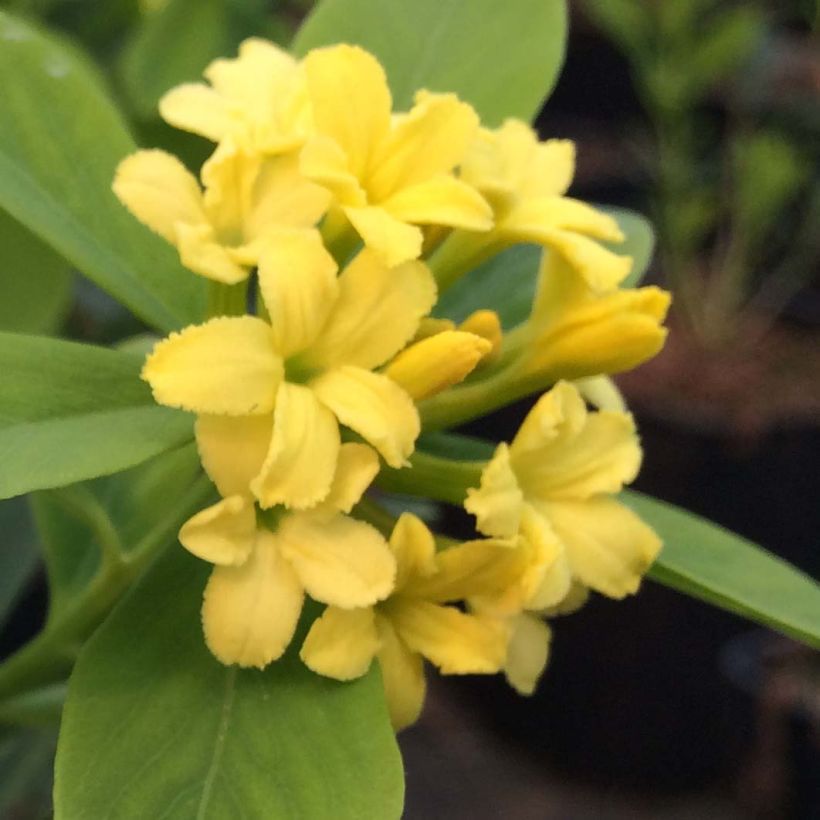

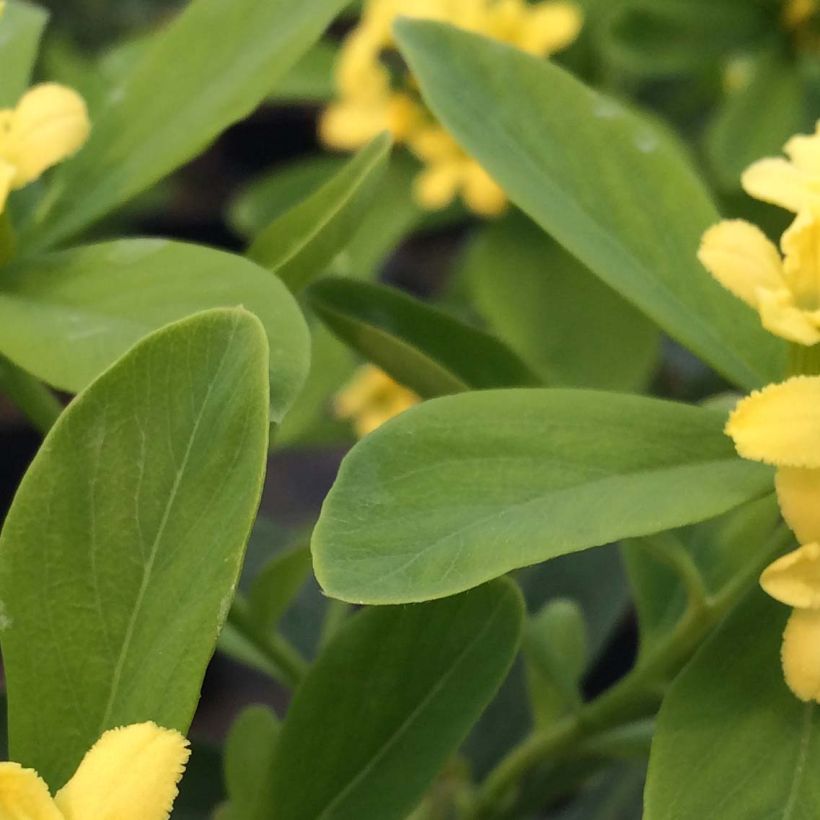



Plant habit
Flowering
Foliage
Safety measures
Botanical data
Daphne
gemmata
Royal Crown
Thymelaeaceae
Jewelled Daphne
Cultivar or hybrid
ingestion
Cette plante est toxique si elle est ingérée volontairement ou involontairement.
Ne la plantez pas là où de jeunes enfants peuvent évoluer, et lavez-vous les mains après l'avoir manipulée.
Pensez à conserver l'étiquette de la plante, à la photographier ou à noter son nom, afin de faciliter le travail des professionnels de santé.
Davantage d'informations sur https://plantes-risque.info
Other Daphne
Planting and care
Daphne gemmata 'Royal Crown' appreciates a sunny to semi-shaded exposure. Cultivate it in well-drained, rather dry and chalky, light, even sandy soil. It is hardy up to about -15°C (5°F), in well-drained soil and in a sheltered position. Apply compost on the surface every 2 years in spring. This Daphne does not require pruning. Use gloves when handling it as its sap is irritating to the skin. Its only disease is Marssonina daphnes. Treat with a fungicidal in spring.
Planting period
Intended location
Care
-
, onOrder confirmed
Reply from on Promesse de fleurs
Spring-flowering shrubs
Haven't found what you were looking for?
Hardiness is the lowest winter temperature a plant can endure without suffering serious damage or even dying. However, hardiness is affected by location (a sheltered area, such as a patio), protection (winter cover) and soil type (hardiness is improved by well-drained soil).

Photo Sharing Terms & Conditions
In order to encourage gardeners to interact and share their experiences, Promesse de fleurs offers various media enabling content to be uploaded onto its Site - in particular via the ‘Photo sharing’ module.
The User agrees to refrain from:
- Posting any content that is illegal, prejudicial, insulting, racist, inciteful to hatred, revisionist, contrary to public decency, that infringes on privacy or on the privacy rights of third parties, in particular the publicity rights of persons and goods, intellectual property rights, or the right to privacy.
- Submitting content on behalf of a third party;
- Impersonate the identity of a third party and/or publish any personal information about a third party;
In general, the User undertakes to refrain from any unethical behaviour.
All Content (in particular text, comments, files, images, photos, videos, creative works, etc.), which may be subject to property or intellectual property rights, image or other private rights, shall remain the property of the User, subject to the limited rights granted by the terms of the licence granted by Promesse de fleurs as stated below. Users are at liberty to publish or not to publish such Content on the Site, notably via the ‘Photo Sharing’ facility, and accept that this Content shall be made public and freely accessible, notably on the Internet.
Users further acknowledge, undertake to have ,and guarantee that they hold all necessary rights and permissions to publish such material on the Site, in particular with regard to the legislation in force pertaining to any privacy, property, intellectual property, image, or contractual rights, or rights of any other nature. By publishing such Content on the Site, Users acknowledge accepting full liability as publishers of the Content within the meaning of the law, and grant Promesse de fleurs, free of charge, an inclusive, worldwide licence for the said Content for the entire duration of its publication, including all reproduction, representation, up/downloading, displaying, performing, transmission, and storage rights.
Users also grant permission for their name to be linked to the Content and accept that this link may not always be made available.
By engaging in posting material, Users consent to their Content becoming automatically accessible on the Internet, in particular on other sites and/or blogs and/or web pages of the Promesse de fleurs site, including in particular social pages and the Promesse de fleurs catalogue.
Users may secure the removal of entrusted content free of charge by issuing a simple request via our contact form.
The flowering period indicated on our website applies to countries and regions located in USDA zone 8 (France, the United Kingdom, Ireland, the Netherlands, etc.)
It will vary according to where you live:
- In zones 9 to 10 (Italy, Spain, Greece, etc.), flowering will occur about 2 to 4 weeks earlier.
- In zones 6 to 7 (Germany, Poland, Slovenia, and lower mountainous regions), flowering will be delayed by 2 to 3 weeks.
- In zone 5 (Central Europe, Scandinavia), blooming will be delayed by 3 to 5 weeks.
In temperate climates, pruning of spring-flowering shrubs (forsythia, spireas, etc.) should be done just after flowering.
Pruning of summer-flowering shrubs (Indian Lilac, Perovskia, etc.) can be done in winter or spring.
In cold regions as well as with frost-sensitive plants, avoid pruning too early when severe frosts may still occur.
The planting period indicated on our website applies to countries and regions located in USDA zone 8 (France, United Kingdom, Ireland, Netherlands).
It will vary according to where you live:
- In Mediterranean zones (Marseille, Madrid, Milan, etc.), autumn and winter are the best planting periods.
- In continental zones (Strasbourg, Munich, Vienna, etc.), delay planting by 2 to 3 weeks in spring and bring it forward by 2 to 4 weeks in autumn.
- In mountainous regions (the Alps, Pyrenees, Carpathians, etc.), it is best to plant in late spring (May-June) or late summer (August-September).
The harvesting period indicated on our website applies to countries and regions in USDA zone 8 (France, England, Ireland, the Netherlands).
In colder areas (Scandinavia, Poland, Austria...) fruit and vegetable harvests are likely to be delayed by 3-4 weeks.
In warmer areas (Italy, Spain, Greece, etc.), harvesting will probably take place earlier, depending on weather conditions.
The sowing periods indicated on our website apply to countries and regions within USDA Zone 8 (France, UK, Ireland, Netherlands).
In colder areas (Scandinavia, Poland, Austria...), delay any outdoor sowing by 3-4 weeks, or sow under glass.
In warmer climes (Italy, Spain, Greece, etc.), bring outdoor sowing forward by a few weeks.

































